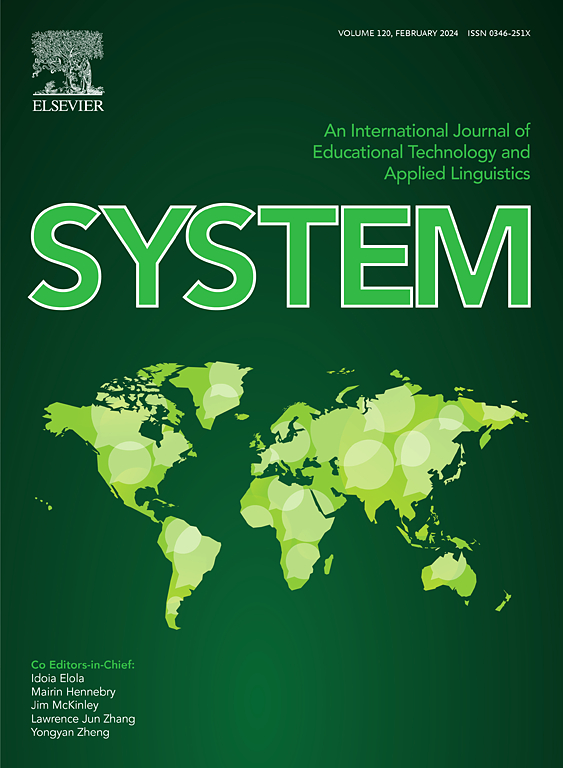第二语言阿拉伯语的想象、相信和成就:多语语境下的动机性自我概念和语言结果
IF 5.6
1区 文学
Q1 EDUCATION & EDUCATIONAL RESEARCH
引用次数: 0
摘要
本研究借鉴Dörnyei(2005)第二语言动机自我系统和学术自我概念与成就的研究,探讨了当前自我概念、想象的未来自我(理想自我、应该自我)和第二语言阿拉伯语的熟练程度。172名在校学生在一学年开始和结束时完成了动机调查和语言熟练程度测量。现代标准阿拉伯语、古典阿拉伯语和方言的第二语言自我概念是分开测量的。随着时间的推移,语言能力没有提高,第二语言自我概念有所下降。交叉滞后因子得分路径模型探讨了变量之间的关系。时间1的熟练程度预测了时间2的MSA和古典阿拉伯语的当前和理想自我概念,支持“我实现,因此我相信”的途径。只有微弱的证据支持反向途径(最初的自我概念预测随后的熟练程度)。三种语言变体之间的模式不同,支持阿拉伯语的多语观。本文章由计算机程序翻译,如有差异,请以英文原文为准。
Imagining, believing and achieving in L2 Arabic: Motivational self-concepts and language outcomes in a multiglossic context
Drawing on Dörnyei's (2005) Second Language Motivational Self System and research on academic self-concept and achievement, this study explored current self-concepts, imagined future selves (ideal self; ought-to self) and proficiency in L2 Arabic. 172 school students completed motivation surveys and language proficiency measures at the start and end of one school year. L2 self-concepts were measured separately for Modern Standard Arabic, Classical Arabic and Dialects. No increases in language proficiency, and some decreases in L2 self-concepts, were observed over time. Cross-lagged factor score path models explored relationships between the variables. Time 1 proficiency predicted Time 2 current and ideal self-concepts for MSA and Classical Arabic, supporting an ‘I achieve, therefore I believe’ pathway. Only weak support emerged for the inverse pathway (initial self-concepts predicting subsequent proficiency). Models differed amongst the three language varieties, supporting a multiglossic view of Arabic.
求助全文
通过发布文献求助,成功后即可免费获取论文全文。
去求助
来源期刊

System
Multiple-
CiteScore
8.80
自引率
8.30%
发文量
202
审稿时长
64 days
期刊介绍:
This international journal is devoted to the applications of educational technology and applied linguistics to problems of foreign language teaching and learning. Attention is paid to all languages and to problems associated with the study and teaching of English as a second or foreign language. The journal serves as a vehicle of expression for colleagues in developing countries. System prefers its contributors to provide articles which have a sound theoretical base with a visible practical application which can be generalized. The review section may take up works of a more theoretical nature to broaden the background.
 求助内容:
求助内容: 应助结果提醒方式:
应助结果提醒方式:


